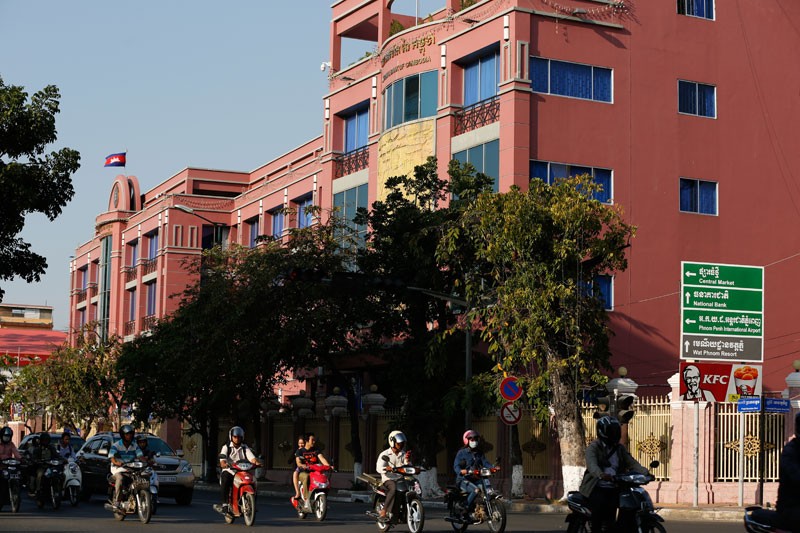A pilot program providing short-term central bank funds in riel, primarily for microfinance institutions (MFIs), has struggled to attract applicants, highlighting the difficulties facing efforts to promote the local currency, and control interest and exchange rates.
Seven months since the start of the National Bank of Cambodia’s “liquidity-providing collateralized operation,” the central bank has issued no more than three loans in any one month under the program, including one this month, according to figures the bank published on Tuesday.

“The low applications might be because they do not need riel yet,” said Sok Veatinty, credit division chief at the central bank’s banking operations department, though she added that she had yet to closely investigate the reasons for the slow uptake.
This month’s loan was valued at about 8 billion riel, roughly $2 million, at a 3 percent annual interest, the figures show. Ms. Veatinty said loans under the program matured in three months and could be renewed.
The program started in October amid the government’s ongoing campaign to encourage the use of riel throughout the economy.
Chou Ngeth, senior consultant at Emerging Market Consulting, said the program was one of several central bank policies aiming to maintain price and exchange rate stability.
The small size of the loans under the program made it suitable mostly for MFIs, Mr. Ngeth said, but a recent government-imposed cap on MFI interest rates meant there was unlikely to be much demand for small-scale financing from the central bank.
“After the recent interest cap came into effect on April 1, I believe not many small-lending MFIs are keen to lend small loans because it is simply less profitable for them,” he said.
Yun Sovanna, secretary-general of the Cambodia Microfinance Association, said that loans under the program might have attractive rates, but in practice, they involved costly requirements.
MFIs seeking funds from the central bank need to either place a significant deposit in U.S. dollars—often financed with a separate loan—or secure a guarantor from entities like the World Bank or Asian Development Bank through a costly and time-consuming process, Mr. Sovanna said.
“Eventually through this condition, the overall rate will get to about 10 percent,” he said.




